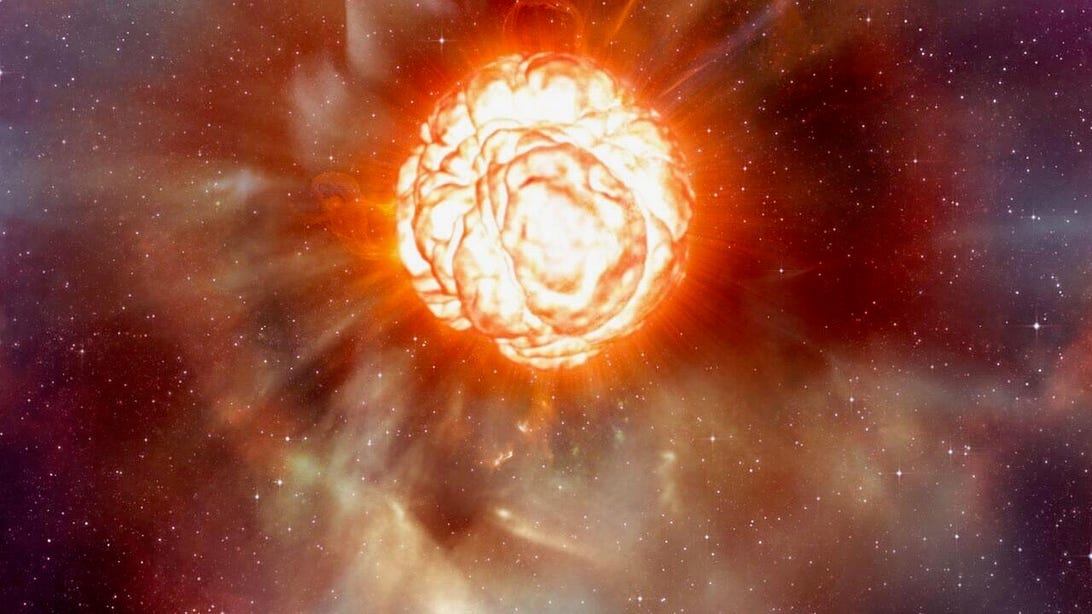
An artist's impression of Betelgeuse surrounded by a plume of gas.
ESO/L. CalçadaBefore COVID-19 exploded and dominated global headlines, the possibility of nearby giant star Betelgeuse literally exploding captured plenty of attention of its own. Betelgeuse went through a historically sudden and drastic period of dimming over several months in late 2019 and early 2020, leading some to wonder if the gigantic star might be preparing to go supernova. Now, new research suggests it would be premature to write an obituary for the red supergiant.
During the so-called Great Dimming of Betelgeuse, the star was 10 times darker than usual, Miguel Montargès from the Observatoire de Paris, France and colleagues report in a paper published in the latest issue of the journal Nature.
The study includes new analysis of images taken in 2019 and 2020 of the star, which is just over 700 light-years away from Earth, showing that during its Great Dimming, Betelgeuse was actually being obscured by its own stellar exhalations.
"We have directly witnessed the formation of so-called stardust," Montargès, who led the observation campaign using the European Southern Observatory's Very Large Telescope in Chile, said in a statement.
Red supergiants are the largest stars in the universe, representing a stage in the evolution of giant stars in which they expand outward, begin to cool and lose mass as they progress toward going out with a big blast in the end.
The observations of Betelgeuse seem to show the Great Dimming was actually caused by just such a mass loss incident. The star expelled a clump of gas near a region on the southern portion of its surface that developed a cold patch shortly thereafter. This cooling of the ejected gas allowed it to condense into literal stardust.
"This process generated a dense southern dust cloud that temporarily blocked much of Betelgeuse's light, giving us what we saw as the Great Dimming," explained University of Washington astronomer Emily M. Levesque, who was not a part of the research team, in a companion commentary published in Nature.
In addition to explaining the weird behavior of Betelgeuse, the researchers say the episode adds to our wider understanding of the universe.
"The dust expelled from cool evolved stars, such as the ejection we've just witnessed, could go on to become the building blocks of terrestrial planets and life," added Emily Cannon of Belgian university KU Leuven, who was also involved in the study.
Dust clouds might seem a disappointing end to the Betelgeuse melodrama, but there is good news for skywatchers who just want to see an epic show. The giant star is still expected to go supernova sometime in the next 100,000 years, so keep an eye on the constellation Orion the hunter, where you'll find Betelgeuse shining brightly (usually) as one of its shoulders.
Follow CNET's 2021 Space Calendar to stay up to date with all the latest space news this year. You can even add it to your own Google Calendar.
Article From & Read More ( What caused the 'Great Dimming' of giant star Betelgeuse? Finally, an answer - CNET )https://ift.tt/3q3LN6Q
Science
No comments:
Post a Comment